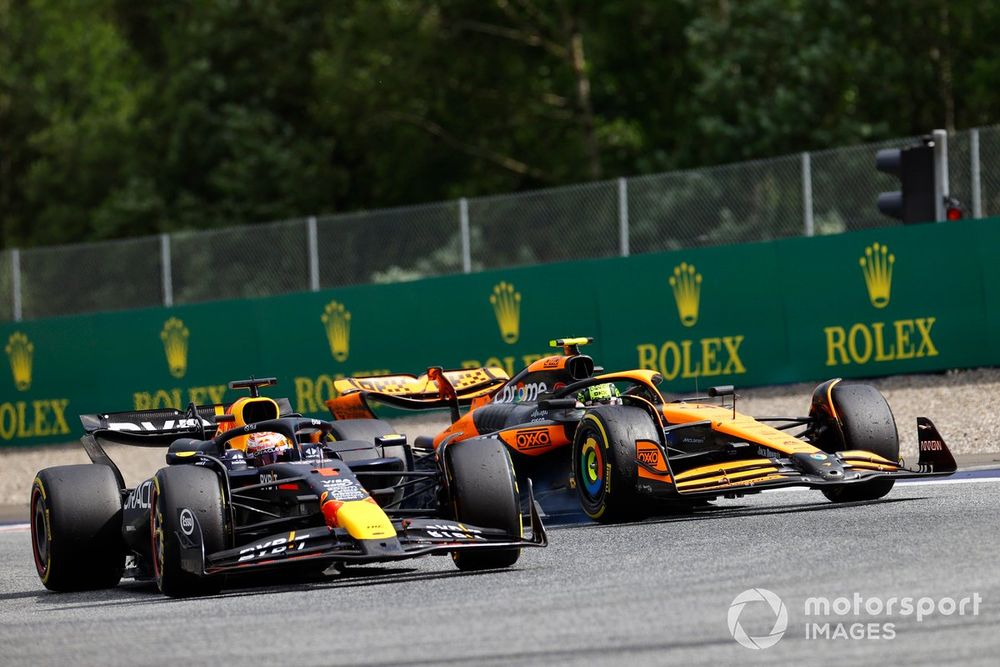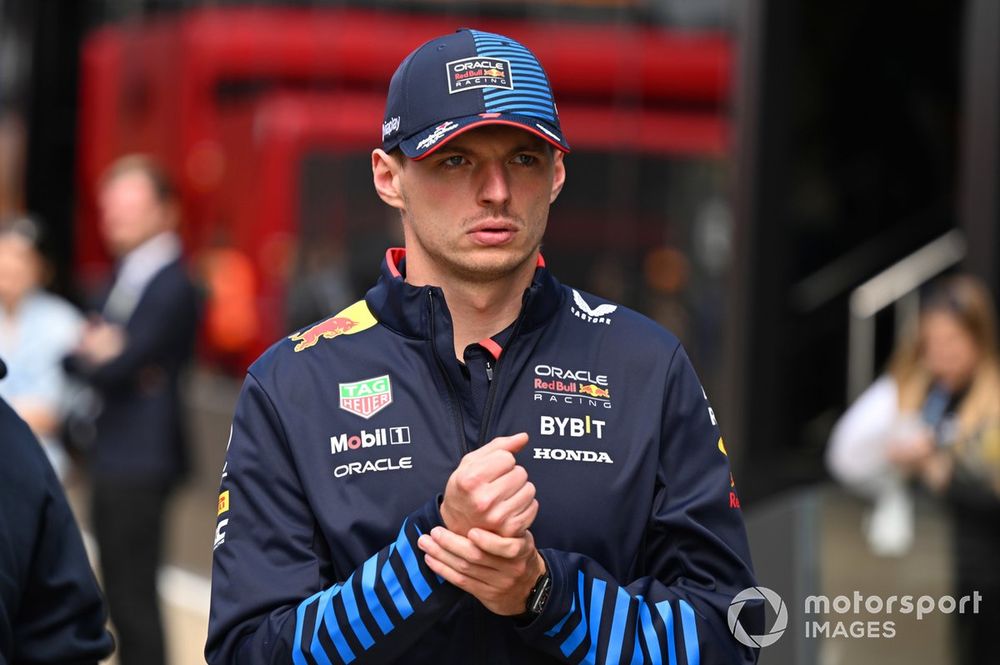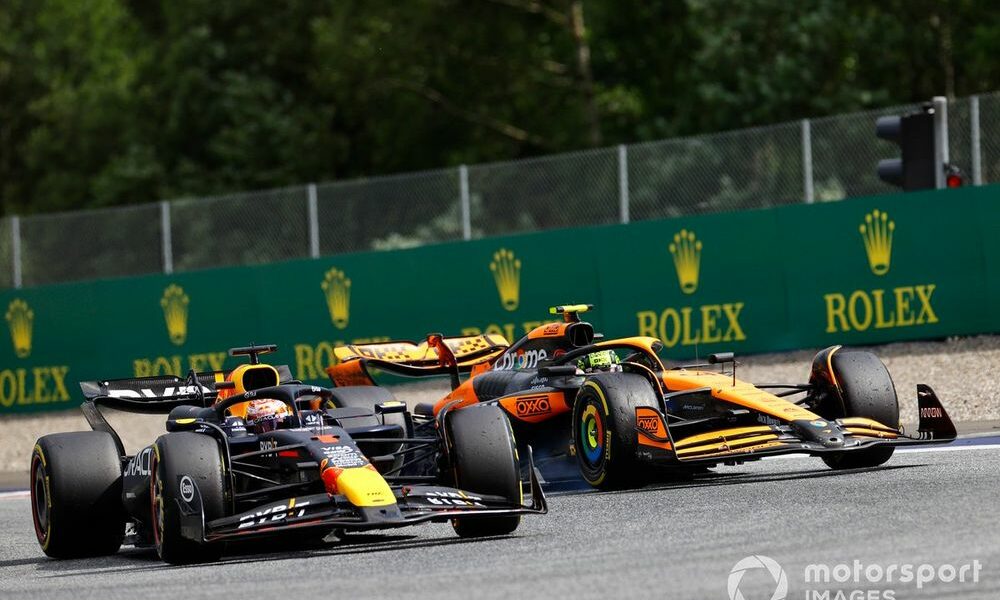While Max Verstappen and Lando Norris have agreed to move on from their Austrian Grand Prix collision, the issue of Formula 1’s racing rules remains a hot topic.
And, while opinion is divided right now between those who think more regulation is needed to drive out uncertainty, and those favouring a ‘let them race’ approach, the situation will ultimately never have a perfect solution.
Even as the FIA has moved to try to deliver greater clarity, even documents it has issued regarding rules of racing admit that the nature of motorsport means every incident has to be judged on its own merit.
That is why even what appears to be a black-and-white guideline sent to F1 teams and drivers that ban moving under braking falls into a grey area.
The FIA has put a lot of effort over the past two years into framing a set of what it calls Driving Standards that it wants to put into the International Sporting Code to apply to all its categories.
These have been pulled together following consultation with teams and drivers, to make sure that everyone is on the same page when it comes to understanding what is and is not allowed.
These guidelines are not yet formally in the rule book, but teams were notified back in February that they would form the basis of how stewards would take decisions on any potential infringements.
It is made clear that the terms would be used as a “guide to the decision-making process of the Stewards and are not binding. The Stewards will use their discretion”.
Inside the guidelines, a copy of which has been seen by Autosport, is a specific reference to the stance on moving under braking.

Max Verstappen, Red Bull Racing RB20, leads Lando Norris, McLaren MCL38
Photo by: Andy Hone / Motorsport Images
It states: “When defending, there must be no change in direction by the defending car, after the deceleration phase has commenced, except to follow the racing line.”
This statement appears to be definitive, and would suggest that the kind of movements seen from Verstappen in Austria could fall across the line of what is not allowed – because, as Norris complained about, he appeared to move in the braking zone several times.
However, as is explicitly acknowledged in the document, it is an impossible task to impose such a black-and-white definition to be applied to every incident.
Indeed, in a section at the start of the guidelines highlighted as “Important Notes”, it is emphasised that: “Racing is a dynamic process. Although these guidelines indicate specific relative positions of the cars at various points, the Stewards will always look at how the situation played out in total when reviewing an incident.”
It then cites some of the considerations that stewards will make when determining the guilty party in any incident – and lays out the factors that it says will be evaluated when it comes to making a judgement.
Examples that the documents include are:
- How did the cars get to the incident? (E.g. late braking, diving in, moving under braking.)
- Was the manoeuvre late or “optimistic”?
- What could the drivers reasonably see, know, or anticipate?
- Do we believe the manoeuvre could be completed on the track?
- Was there understeer/oversteer/locking?
- Did someone position/handle their car in a way that contributed to the incident?
- Did the type of corner contribute to the incident? (e.g. camber, kerbs, curve, apexes)
- What were the relative tyres/tyre age/grip?

Max Verstappen, Red Bull Racing
Photo by: Simon Galloway / Motorsport Images
It added: “These decisions are often subjective. The Stewards will consider each incident, with expert advice from our Driver Steward, and make our best, but final, decision at the time.”
In Verstappen’s case, while the stewards clearly judged that the actual collision between the Red Bull car and Norris on lap 64 was the Dutchman’s fault, its evaluation of the moving under braking complaints is that, taking into consideration all the elements mentioned in the guidelines, there was nothing untoward happening.
Verstappen himself had said on Sunday night in Austria that he never felt he had crossed a line and breached the driving guidelines.
“For me, it was not moving under braking,” he said. “Because every time that I moved, I was not braking already. Of course from the outside it always looks like that, but I think I know fairly well what to do in these kind of scenarios.”
While Verstappen says he and Norris now agree on “99%” of what happened in Austria, that is unlikely to stop other drivers seeking some further clarification in the drivers’ briefing that is scheduled for Friday evening at Silverstone.
However, as often happens in such cases when there are big controversies, the hype before such meetings of there being some angst often falls flat.
Verstappen’s own prediction of how the meeting could turn out is: “Many people don’t want to be in the driver’s meeting for too long. Most of the time you think that it’s going to be a long meeting and most of the time, it’s not.”
But despite the Driving Standards guidelines getting enshrined in the regulations next year, Verstappen thinks more regulations written down is not necessarily the right thing to do.
“I think we have already way too many rules in general for everything,” he said. “So I think that will only make it more complicated.”
Watch: View from the Paddock – F1 British Grand Prix Thursday Update

